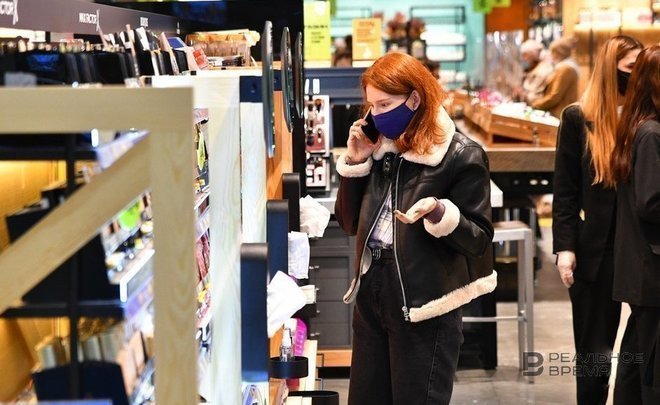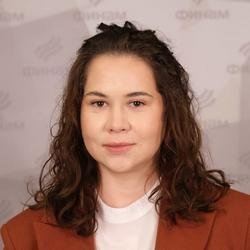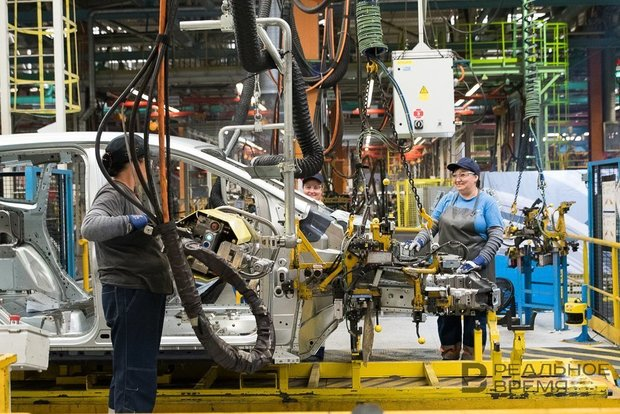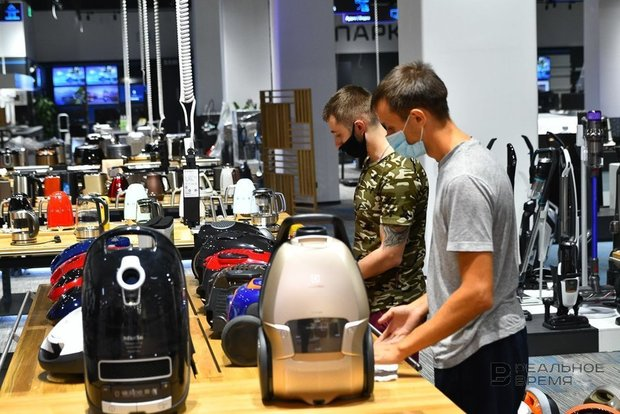Anna Buylakova: ‘The consumer sector is handling the crisis, the high season is ahead’

Russia’s consumer sector is subjected to some indirect geopolitical risks and challenges after the start of the special military operation, however, in general it looks fine, notes analyst of Finam Anna Buylakova. In another op-ed column for Realnoe Vremya, the expert talks about a more stable situation of food retailers, a fall in demand and supply for durable goods and forecasts the situation in the market until the end of the year.
Falling demand as consequence of falling real incomes
Food retailers look more stable among other companies of the consumer sector because of the focus on domestic consumption and relatively low import dependence. Non-food retailing looks less confident mid-term amid a decreasing demand for durable goods due to the worsening of consumer expectations and lower supply. The weak ruble is pressing exporters of agricultural produce (compared to 2020-2021), export quotas and “floating” duties, which likely don’t allow taking advantage of the growth of world price for food fully. Inflation in Russia decelerated from the 17,8% peak year-on-year in April because of a fall in prices for fruits and vegetables, a strong ruble, a fall in demand for durable goods. The price growth is also restrained by a reduction in domestic prices for grain and sunflower oil because of export restrictions.
A reduction in real disposable incomes (incomes adjusted to inflation with a deduction of regular payments) from January to July 2022 was 0,8% year-on-year, according to the estimate of the Russian Statistics Service.
Demand goes down as a consequence of falling real incomes. The population switches to бережливое потребление, costs on products of after-market demand reduce first such as leisure time, some luxury elements, durable goods (household appliances, cars, etc.). The demand for essentials (foods, medicines, commodities for kids) remains more stable. The retail trade turnover in Russia in the second quarter of 2022 reduced by 9,8% y/y in comparable prices. Moreover, non-food trade plunged (-16,6% YoY) compared to foods (-1,8% YoY).
Retailers replied with search for alternatives to distributors’ exit

There are gaps in the assortment of retailers because of the refusal of some producers to ship products to Russia and a disruption of supply chains. A product on the shelf is one of the key factors of retail chains’ success, and companies put effort to restore logistic links and replenish the assortment.
The food sector looks steadier because of having most components in local markets and the possibility of changing the formula. Though there are still import-dependent elements in food production, for instance, foreign whey for baby formula production, foreign seeds or equipment for the Agro-Industrial Complex. It is noteworthy that the Office of Foreign Assets Control made allowances for trading agricultural products, machinery, its spare parts and medical goods when imposing sanctions on Russia by analogy with Iran.
The situation with durable commodities in the long run is a bit more complicated. Household appliances and personal devices or cars are mainly either imported ready for sale or assembled in Russia using foreign components. Retailers replied with the search for alternative suppliers from new regions, ramp-up of direct imports, a change in logistic routes to some producers or distributors’ exit.
M.Video said that it launched its own import with suppliers from China, the UAE, Turkey, Uzbekistan, Kazakhstan, moreover, the share of such sales is growing — in July, they reached 5% of total sales, whereas in the second quarter the average number was just 0,4%.

In sight: consolidation of biggest players’ market shares and business diversification
Legalisation of parallel import (imports of original products without their rights holders’ consent) can assist Russian equipment and car assemblers. However, the non-food trade segment looks riskier compared to the food sector because products in stock created before the special military operation will be sold out, while buyers can be less enthusiastic about the brands that came to replace them.
For instance, according to M.Video’s survey, just 26% of buyers are ready to buy new or not very famous household appliance and electronics brands without any preliminary terms. Most buyers are ready to consider such purchases only if the product has a lower price or doesn’t have analogues.
In general the consumer sector feels good, the food retail turnover looks stable both at this moment and in the mid-term. Non-food retailing looks less confident in the mid-term due to high risks in supply and demand. Though we should note that particularly M.Video showed solid results during the first half of the year. The high-season sales dynamics (the fourth calendar quarter) can add more clarity on how retailers and buyers feel.

Power “rebalancing” goes on. Perhaps, the most prominent foreign companies have already made steps, and a wave of news about the exit of another big international player will calm down a bit by the end of the year. However, we don’t deny the possibility that foreign companies will continue getting rid of Russian assets in favour of long-term partners, rivals, the local management or third parties. Against this background, we suppose to see consolidation of the biggest players’ market shares and business diversification. Food retailers’ shares have shown mixed dynamics since the start of the year, but the rate recovery dynamics in general was better than in the big market.
The debt warrants of X5, Fix Price, OKAY were under big pressure (though the latter’s rates skyrocketed when the dividend payout was announced). The shares of Magnir, one of the few Russian issuers, are back to pre-crisis levels, the target price is 6,330 rubles by late 2023, which envisages a 15,3% upside and the Buy rating. Lenta shares also demonstrated better dynamics.
Reference
The author’s opinion does not necessarily coincide with the position of Realnoe Vremya’s editorial board.